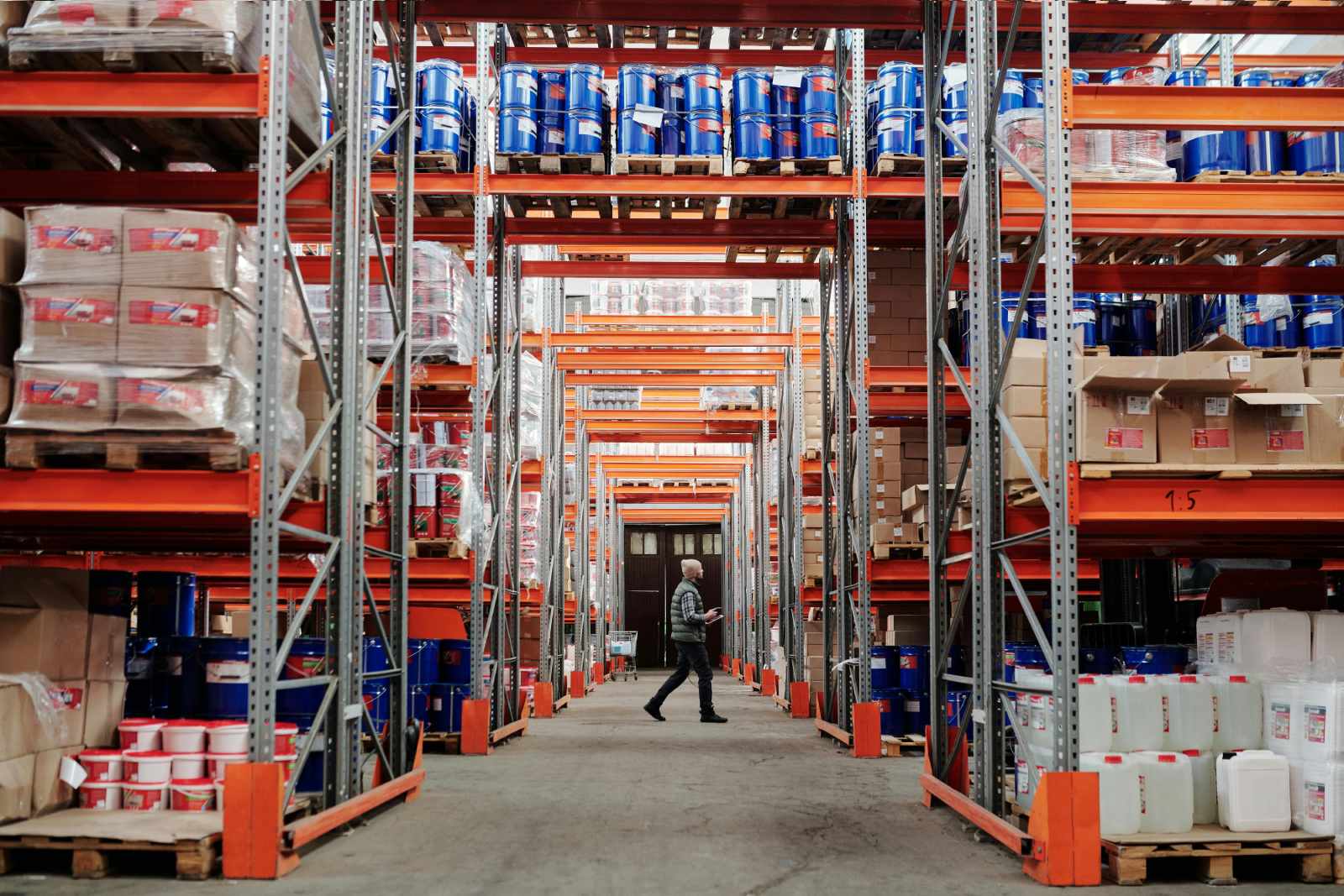Product traceability in logistics
In today’s interconnected global economy, logistics is integral for commerce.
It covers transporting goods across borders, time zones, and regulatory landscapes.
As supply chains become more complex, regulatory in logistics traceability has become critical. Traceability ensures that every product’s journey can be tracked, verified, and validated against regulatory standards.
Thereby, it protects consumer safety, upholds product authenticity, and adheres to legal compliance.
Global supply chains demand robust logistics traceability due to increased regulatory scrutiny, growing sustainability expectations, and the complexity of cross-border trade.
From pharmaceuticals to perishable foods, ensuring that products are stored, handled, and transported in compliance with regulatory standards is no longer optional.
It’s essential.
Key Regulations Impacting Logistics Traceability
EU General Data Protection Regulation (GDPR)
The GDPR impacts logistics by enforcing strict data privacy and security standards.
Logistics companies must ensure that supply chain data – personal and location information is handled securely using Logistics data visibility, transparent data collection policies and explicit consent.
Non-compliance risks include severe fines and reputational damage.
WCO SAFE Framework & CTPAT
The World Customs Organization’s SAFE Framework and the U.S. Customs Trade Partnership Against Terrorism (CTPAT) promote secure and efficient trade.
These initiatives require logistics providers to implement supply chain transparency logistics and security measures, conduct risk assessments, and share data with customs authorities, enhancing compliance and reducing the risk of cargo delays or tampering.
ISO 28000: Supply chain traceability Security Management
ISO 28000 establishes standardized requirements for security management systems in logistics.
It helps organizations identify security risks, implement controls, and monitor effectiveness. Adopting ISO 28000 enhances traceability by formalizing documentation, access controls, and operational procedures.
Food & Pharma Logistics Regulations
Regulations like the FSMA (Food Safety Modernization Act) and FDA DSCSA track and trace (Drug Supply Chain Security Act) mandate traceability for sensitive goods.
The FDA Food Safety Modernization Act (FSMA), enacted in 2011, is a new public health mandate: to establish standards for adoption of modern food safety prevention practices by those who grow, process, transport, and store food.
The purpose is to ensure the safety of the U.S. food supply and prevent foodborne illnesses or contamination. New standards are in fact set for the harvesting, processing and transportation of food products, emphasizing prevention, increased surveillance, grant better response and recovery strategies.
DSCSA focuses on tracking pharmaceutical products from manufacturer to consumer. Cold chain compliance is vital to maintaining temperature-sensitive goods’ integrity. It is a federal law enacted in 2013 to enhance the security and traceability of pharmaceutical products within the United States supply chain, with the primary objective is to safeguard patients and consumers from exposure to counterfeit, stolen, or harmful drugs.
Extended Producer Responsibility (EPR) & Packaging Waste
EPR policies require producers to manage the post-consumer phase of products packaging waste.
Logistics plays a critical role in ensuring that packaging meets recycling and waste reduction mandates. EU tracking regulations demand reporting on packaging composition, waste prevention measures, and proper smart labelling for sorting and recycling.
The Role of Logistics in Supply Chain Traceability
Tracking & Serialization in Global Logistics
Serialization enables end-to-end visibility by assigning unique product identifiers.
These identifiers are tracked through logistics networks, ensuring product authenticity, streamlining recalls, and enabling accurate data for compliance reporting.
Cold Chain Traceability for Perishables
Cold chain logistics ensures compliance with regulations like FSMA and GDP by maintaining controlled logistics environments for sensitive goods.
IoT devices monitor temperature, humidity, and handling, while automated alerts ensure that any deviations are promptly addressed.
Multi-Modal & Cross-Border Compliance Challenges
Ensuring traceability across diverse transportation methods – road, rail, air, and sea, presents unique challenges:
- Diverse Regulatory Standards: Countries and regions impose different Traceability compliance logistics requirements, creating complexity in documentation and tracking.
- Data Interoperability: Systems in logistics using smart labels, RFID, GPS, Blockchain, sensors and IoT in supply chain traceability must integrate seamlessly to ensure consistent data flow.
- Customs & Trade Compliance: Adherence to trade laws, origin verification, and product authentication is critical to avoid penalties or shipment delays.
Logistics traceability Sustainability & ESG Considerations
- Corporate Sustainability Reporting Directive (CSRD): Requires businesses to disclose environmental and social impacts, including logistics traceability.
- Carbon Tracking: Companies must report Scope 3 emissions (one of the most critical aspects of the CSRD) from logistics operations—fuel use, warehousing energy, and more.
- Sustainable logistics Practices: From electrified fleets to route optimization, logistics providers are investing in greener operations.
- Supplier Accountability: ESG compliance requires validating ethical sourcing, labour conditions, and responsible resource use.
- Circular Logistics: Reverse logistics and recycling initiatives are essential for complying with circular economy goals and EPR mandates.
The Reverse Logistics is the process of managing the return of products from consumers back through the supply chain to the retailer or manufacturer.
It includes several activities such as:
- Returns management: Handling product returns from customers, including the “returnable assets”, for example trays, baskets, pallets, containers and totes which contain products.
- Refurbishment: Repairing and restoring products for resale (a valuable service to gain additional revenue streams, for example for luxury brands).
- Recycling: Processing materials for reuse.
- Disposal: Properly disposing of products that cannot be reused or recycled (critical in fashion and textile).
The EU Directive (Directives) for EPR, or Extended Producer Responsibility, holds manufacturers, companies, and sellers responsible for packaging, electrical appliances, and batteries that become waste at the consumer’s end.
Technology Driving Regulatory Logistics Traceability
IoT in supply chain traceability & Smart Sensors Smart sensors offer real-time monitoring of goods during transit, enabling compliance with regulations for temperature-sensitive items.
Alerts for deviations allow quick corrective action, safeguarding product integrity and regulatory compliance.
Blockchain in logistics for Transparency When necessary Blockchain ensures data immutability and transparency across the supply chain. It creates a shared ledger that helps stakeholders verify product origin, detect fraud, and meet international trade compliance requirements.
RFID logistics tracking, QR code logistics traceability & Smart Labels RFID and QR technologies automate tracking and compliance documentation. These smart logistics solutions and sensors enhance traceability by allowing instant access to data such as batch numbers, expiration dates, and regulatory certifications.
AI in logistics management e Predictive Analytics AI analyses vast data sets to forecast regulatory risks, anticipate delays, and optimize routes. Predictive tools enhance audit readiness by identifying potential compliance breaches before they occur.
Digital Product Passports (DPPs) DPPs store detailed product data such as materials used, environmental impact, and recyclability. It enables businesses to comply with evolving sustainability regulations. In logistics, DPPs support traceability from origin to disposal.
Challenges in Implementing Logistics Traceability Systems
Regulatory logistics traceability Inconsistencies Diverse global standards make it difficult for logistics providers to adopt uniform systems. Harmonizing products traceability practices across jurisdictions is an ongoing challenge.
Data Exchange & Interoperability Secure, real-time communication between supply chain partners is critical but often hampered by incompatible systems and data formats.
Investment & ROI Concerns The cost of implementing advanced logistics traceability tools—including training, software, and infrastructure—can be significant, especially for small-to-mid-sized logistics companies.
Resilience & Flexibility Global disruptions, from pandemics to geopolitical conflicts, require adaptive traceability systems capable of maintaining compliance under stress.
Case Studies: How Companies Are Adapting to Logistics Traceability Regulations
Maersk & IBM – TradeLens Blockchain Initiative Maersk and IBM’s TradeLens platform leverages Blockchain in logistics to provide a shared data environment for global trade. It improves transparency, reduces paperwork, and facilitates compliance by offering a unified view of cargo movement.
Sensitech – IoT Cold Chain Monitoring Sensitech offers sensor-based monitoring solutions for the pharmaceutical industry. These systems track temperature and humidity during transit, ensuring FSMA and GDP compliance. Real-time data ensures product safety and audit readiness.
Walmart – Smart Labelling & Serialization Walmart employs Smart logistics solutions technologies and Blockchain in logistics to track food products from origin to shelf. This enhances traceability, accelerates recalls, and meets regulatory standards while increasing consumer trust.
Kering Eyewear’s – Kering wanted to streamline supply chain related processes and improve the company’s level of sustainability, through the introduction of technologies capable of integrating with the ERP systems in use.
Kering Eyewear has therefore intervened with a “Digital Document Management” program, on logistic processes, from an optimization and sustainability perspective, with the goal of reaching an intuitive interface and seamless integration with the management system.
As well as:
- improve the management of logistic documents making them more accessible
- streamline the process by digitizing steps that required paper document printing
- significantly reduce the amount of paper documents used internally and towards its customers.
Among the different types of Logistic Traceability solutions also “Digital Document Management” needs to be included, as it not only improves operational efficiency but also contributes to engaging all stakeholders: users, business functions, and management.
Future Trends in Regulatory Logistics Traceability
As we move toward 2025 and beyond, logistics traceability will be shaped by:
- Greater AI in logistics management for predictive compliance.
- Edge Computing & Real-Time Analytics at transit points.
- Digital twin logistics networks for simulation and planning.
- Standardization Efforts by international bodies to align traceability frameworks.
- Sustainability-centric innovation driven by carbon tracking and ESG mandates.
The top trends in supply chain technology for 2025 according to Gartner are:
- Ambient Invisible Intelligence
- Augmented Connected Workforce (ACWF)
- Multimodal UI
- Polyfunctional Robots
- Agentic AI
- Autonomous Data Collection
- Decision Intelligence (DI)
- Intelligent Simulation
Logistics tracking solutions: Next Steps
Regulatory in logistics traceability is a cornerstone of modern logistics.
From food safety to data privacy, the regulatory landscape continues to evolve, demanding agile, secure, and transparent logistics systems.
Challenges like inconsistent standards, high implementation costs, and interoperability hurdles persist, but emerging technologies offer powerful solutions.
Global alignment on data standards and proactive adoption of technologies like IoT in supply chain traceability, AI in logistics management, and smart sensors in logistics, all integrated into a global platform for an end-to-end visibility, will be key to achieving a proper traceability.
Companies that invest in traceability infrastructure now will be better prepared for audits, reduce risk, and lead in a future where compliance is not just mandatory—it’s a competitive advantage.
Coming Soon: The Role of IoT and AI in Logistics Traceability




